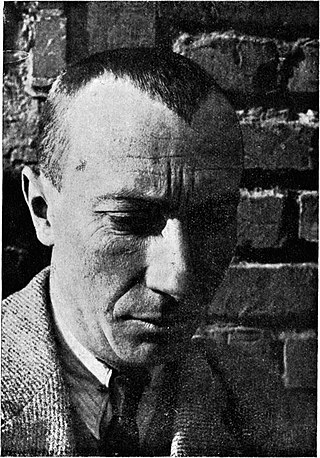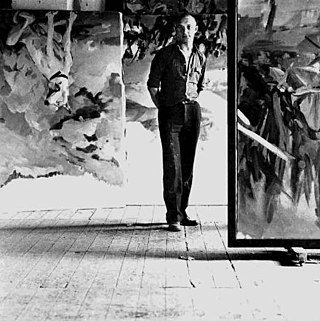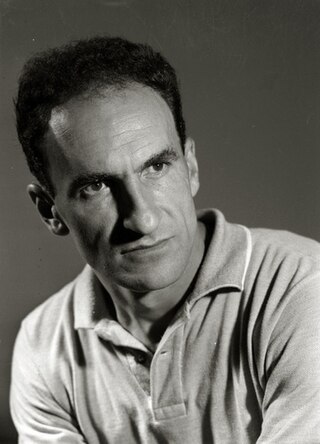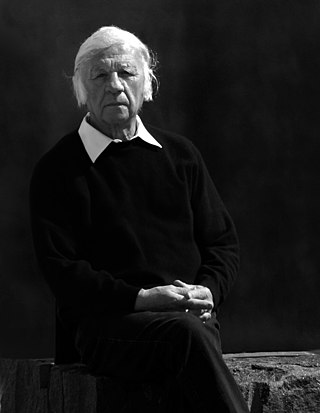
Wolf Vostell was a German painter and sculptor, considered one of the early adopters of video art and installation art and pioneer of Happenings and Fluxus. Techniques such as blurring and Dé-coll/age are characteristic of his work, as is embedding objects in concrete and the use of television sets in his works. Wolf Vostell was married to the Spanish writer Mercedes Vostell and has two sons, David Vostell and Rafael Vostell.

Hans Peter Wilhelm Arp, better known as Jean Arp in English, was a German-French sculptor, painter, and poet. He was known as a Dadaist and an abstract artist.

Jean Philippe Arthur Dubuffet was a French painter and sculptor. His idealistic approach to aesthetics embraced so-called "low art" and eschewed traditional standards of beauty in favor of what he believed to be a more authentic and humanistic approach to image-making. He is perhaps best known for founding the art movement art brut, and for the collection of works—Collection de l'art brut—that this movement spawned. Dubuffet enjoyed a prolific art career, both in France and in America, and was featured in many exhibitions throughout his lifetime.

Joseph Kosuth, an American conceptual artist, lives in New York and London, after having resided in various cities in Europe, including Ghent and Rome.

Georg Baselitz is a German painter, sculptor and graphic artist. In the 1960s he became well known for his figurative, expressive paintings. In 1969 he began painting his subjects upside down in an effort to overcome the representational, content-driven character of his earlier work and stress the artifice of painting. Drawing from myriad influences, including art of Soviet era illustration art, the Mannerist period and African sculptures, he developed his own, distinct artistic language.

Eduardo Chillida Juantegui, or Eduardo Txillida Juantegi in Basque, was a Spanish Basque sculptor notable for his monumental abstract works.

Edward Ralph Kienholz was an American installation artist and assemblage sculptor whose work was highly critical of aspects of modern life. From 1972 onwards, he assembled much of his artwork in close collaboration with his artistic partner and fifth wife, Nancy Reddin Kienholz. Throughout much of their career, the work of the Kienholzes was more appreciated in Europe than in their native United States, though American museums have featured their art more prominently since the 1990s.

Hans Hofmann was a German-born American painter, renowned as both an artist and teacher. His career spanned two generations and two continents, and is considered to have both preceded and influenced Abstract Expressionism. Born and educated near Munich, he was active in the early twentieth-century European avant-garde and brought a deep understanding and synthesis of Symbolism, Neo-impressionism, Fauvism, and Cubism when he emigrated to the United States in 1932. Hofmann's painting is characterized by its rigorous concern with pictorial structure and unity, spatial illusionism, and use of bold color for expressive means. The influential critic Clement Greenberg considered Hofmann's first New York solo show at Peggy Guggenheim’s Art of This Century in 1944 as a breakthrough in painterly versus geometric abstraction that heralded abstract expressionism. In the decade that followed, Hofmann's recognition grew through numerous exhibitions, notably at the Kootz Gallery, culminating in major retrospectives at the Whitney Museum of American Art (1957) and Museum of Modern Art (1963), which traveled to venues throughout the United States, South America, and Europe. His works are in the permanent collections of major museums around the world, including the Metropolitan Museum of Art, Tate Modern, Germanisches Nationalmuseum, National Gallery of Art, and Art Institute of Chicago.
Wolf Kahn was a German-born American painter.
Günter Brus is an Austrian painter, performance artist, graphic artist, experimental filmmaker and writer.

Bernau bei Berlin is a German town in the Barnim district. The town is located about 10 km (6.2 mi) northeast of Berlin.
Friedel Dzubas was a German-born American abstract painter.

Günther Uecker is a German sculptor, op artist and installation artist.
Birgit Hein was a German film director, producer, performance artist, university professor, and screenwriter who has made experimental films since 1960s, with her then husband Wilhelm Hein.

Milan Knížák is a Czech performance artist, sculptor, noise musician, installation artist, political dissident, graphic artist, art theorist and pedagogue of art associated with Fluxus.

Heinz Mack is a German artist. Together with Otto Piene he founded the ZERO movement in 1957. He exhibited works at documenta in 1964 and 1977 and he represented Germany at the 1970 Venice Biennale. He is best known for his contributions to op art, light art and kinetic art.
William Clutz was an American artist known for urban paintings, pastels, and charcoal drawings of pedestrian scenes transformed by light. He was associated with a revival in figurative representation in American art during the 1950s and 1960s.
Timo Kahlen is a German sound sculptor and media artist who currently lives and works in Berlin.

Arnold Oscar Wolfers was a Swiss-American lawyer, economist, historian, and international relations scholar, most known for his work at Yale University and for being a pioneer of classical international relations realism.

William Fetter, also known as William Alan Fetter or Bill Fetter, was an American graphic designer and pioneer in the field of computer graphics. He explored the perspective fundamentals of computer animation of a human figure from 1960 on and was the first to create a human figure as a 3D model. The First Man was a pilot in a short 1964 computer animation, also known as Boeing Man and now as Boeman by the Boeing company. Fetter preferred the term "Human Figure" for the pilot. In 1960, working in a team supervised by Verne Hudson, he helped coin the term Computer graphics. He was art director at the Boeing Company in Wichita.













